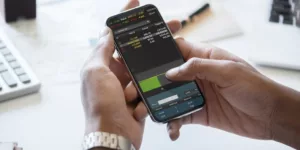There are lots of different ways to trade on the different markets, but one that is very popular is known as Contract for Difference or CFD. This is the name given to an agreement between a broker and a trader about the changing value of an asset over a period of time. Here’s a beginner’s guide to CFDs and how they work.
Understanding CFD trading
One of the first things to understand about CFD trading is that the trader never owns the share or commodity that they are trading with. The aim is to make a judgement call about the value of the asset and whether it will go long (increase in price) or go short (decrease in price).
To make the trade, a trader only needs to put down a small deposit – this is known as trading on margin. A trader might need to put down a 5% deposit of the total amount as an initial deposit. If the trader is correct in what they think will happen, the seller pays them the difference between the initial price and the new price. On the other hand, if the trader gets it wrong, they will have to pay the seller that difference.
This price difference is known as the spread. The bid price is the lower of the prices involved in the trade and is also known as the selling price. The offer or ask price is the higher figure, known as the buying price.
What kind of trades can you make?
The other big question around CFD trading is what you can trade. And in most cases, the answer is almost anything at almost any time of the day, five days a week.
Individual shares or equities are one example of something you can trade. These are companies that have been floated on the stock market and allow anyone to invest in them – Facebook, Apple and supermarkets like Tesco are good examples. Stock indices are collections of stocks that are based on a set location – the UK 100 and US30 are two examples. You can make trades based on the changes in the indices.
Commodities is another huge category that includes everything from precious metals like gold to crude oil and even agricultural goods like sugar. There are lots of factors that can affect this market and it is a popular one for CFD trading. Currencies are the other prominent category that traders usually work with, and these are always traded in pairs. CFD trading compares the price of one against another and trades on the anticipated changes.
How to make a trade
Once you have some ideas about what kind of trades you want to make, the idea is to use a good quality, secure trading platform. The actual process of making a trade can vary a little but is very simple – you select the higher offer price you think the asset will increase to or the lower bid price you think it will fall to. You need the deposit amount for trading on a margin and a little extra funds in case your trade doesn’t work out in your favour. Then you are ready to go.
There’s more to trading than just this, of course. The key is education and learning about the different trades as well as developing a strategy including things like stop limits. It is good to use a quality platform such as Wilkins Finance which can offer plenty of educational resources to help you master trading as well as a safe place to make those trades. Sign up for an account today to start your trading experience.








